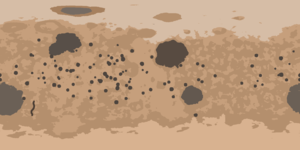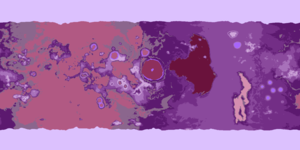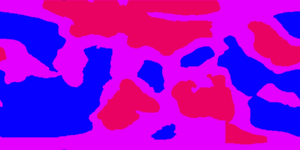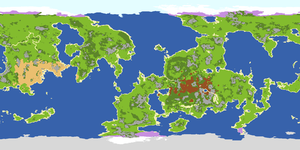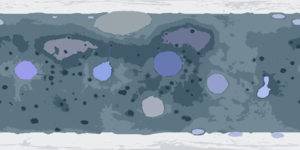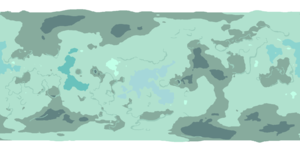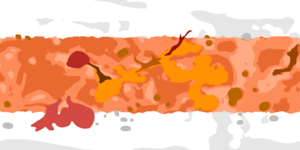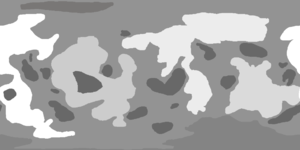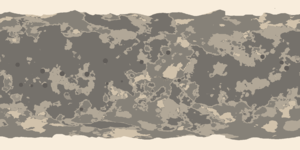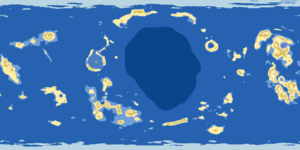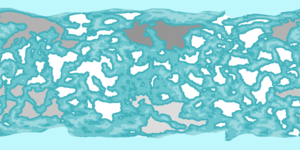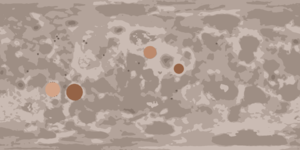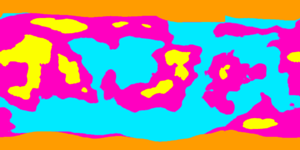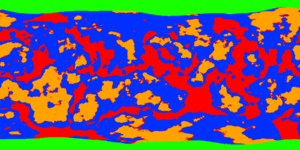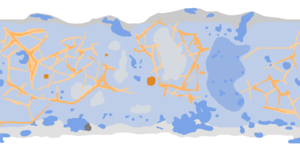Difference between revisions of "Biome"
m (The Mohole is not a biome. https://i.imgur.com/tz4QuFI.jpg) |
(Update biomes) |
||
| Line 7: | Line 7: | ||
With version [[0.90]] biomes were added to all celestial bodies which have a solid surface, which excepts Jool and the Sun. Before that only the [[Kerbin]] system - Kerbin, [[Mun]] and [[Minmus]] - had biomes. [[Jool]]'s moon [[Laythe]] and the planet [[Eve]] have bodies of water and science activities performed in them stated as being from "Laythe's oceans" and "Eve's oceans". However, this was just the effect of the [[Science#Situations|situation]] "SrfSplashed" for a splashdown versus the usual "SrfLanded" surface landing. | With version [[0.90]] biomes were added to all celestial bodies which have a solid surface, which excepts Jool and the Sun. Before that only the [[Kerbin]] system - Kerbin, [[Mun]] and [[Minmus]] - had biomes. [[Jool]]'s moon [[Laythe]] and the planet [[Eve]] have bodies of water and science activities performed in them stated as being from "Laythe's oceans" and "Eve's oceans". However, this was just the effect of the [[Science#Situations|situation]] "SrfSplashed" for a splashdown versus the usual "SrfLanded" surface landing. | ||
| − | With versions [[1.2]] and [[1.2.1]] biome maps were slightly overhauled. | + | With versions [[1.2]] and [[1.2.1]], biome maps were slightly overhauled and new biomes were added setting the total count of biomes on 145. |
== Kerbol == | == Kerbol == | ||
| Line 13: | Line 13: | ||
=== Moho === | === Moho === | ||
| − | + | [[Moho]] has 12 biomes. It is one of three bodies (the other being [[Kerbin]] and [[Ike]]) that have their own North and South Pole biomes. It is dotted with Minor Craters and features four distinct Lowland Biomes. | |
| − | {{Biome list|body=Moho| | + | |
| + | {{Biome list|body=Moho| | ||
* North Pole | * North Pole | ||
* Northern Sinkhole Ridge | * Northern Sinkhole Ridge | ||
| Line 29: | Line 30: | ||
=== Eve === | === Eve === | ||
| − | [[Eve]] has 15 | + | [[Eve]] has 15 biomes with their own science to be collected. It's main features are a large Explodium Sea with some scattered Islands and Shallow areas as well as a Main Continent and Poles. Within the Continent lie three large bodies of liquid, one being a Crater Lake. There are also areas covered with Impact Ejecta. |
| − | {{Biome list|body=Eve| | + | |
| + | {{Biome list|body=Eve| | ||
* Poles | * Poles | ||
* Lowlands | * Lowlands | ||
| Line 49: | Line 51: | ||
==== Gilly ==== | ==== Gilly ==== | ||
With only 3 biomes, the moon of Eve, called [[Gilly]], has the fewest number of biomes. | With only 3 biomes, the moon of Eve, called [[Gilly]], has the fewest number of biomes. | ||
| − | {| | + | |
| − | + | {{Biome list|body=Gilly| | |
| − | |||
| − | | | ||
* Lowlands | * Lowlands | ||
* Midlands | * Midlands | ||
| − | * Highlands | + | * Highlands}} |
| − | + | ||
=== Kerbin === | === Kerbin === | ||
The planet [[Kerbin]] has 11 biomes, plus a large number of surface-only “location biomes” comprising [[Kerbal Space Center]]. Roughly 60% Kerbin's surface is Water biome. Grasslands and Highlands biomes cover most of the land area. Along with Moho and Ike it has distinct polar biomes. | The planet [[Kerbin]] has 11 biomes, plus a large number of surface-only “location biomes” comprising [[Kerbal Space Center]]. Roughly 60% Kerbin's surface is Water biome. Grasslands and Highlands biomes cover most of the land area. Along with Moho and Ike it has distinct polar biomes. | ||
Kerbin is the only celestial body with location biomes: the grounds of [[KSC]] and the many structures it is composed of. Each count as a biome only with experiments performed on the surface. KSC is within a Shores biome, so experiments while flying at any altitude over the KSC count as Shores. However, it is possible to get an "EVA Report while flying over" the area, either while jumping, grabbing a ladder on a craft, or sitting on a [[EAS-1 External Command Seat]]. | Kerbin is the only celestial body with location biomes: the grounds of [[KSC]] and the many structures it is composed of. Each count as a biome only with experiments performed on the surface. KSC is within a Shores biome, so experiments while flying at any altitude over the KSC count as Shores. However, it is possible to get an "EVA Report while flying over" the area, either while jumping, grabbing a ladder on a craft, or sitting on a [[EAS-1 External Command Seat]]. | ||
| − | {| | + | |
| − | + | {{Biome list|body=Kerbin| | |
| − | |||
| − | | | ||
* Ice Caps | * Ice Caps | ||
* Northern Ice Shelf | * Northern Ice Shelf | ||
| Line 75: | Line 73: | ||
* Badlands | * Badlands | ||
* Shores | * Shores | ||
| − | * Water | + | * Water}} |
| − | + | ||
| − | + | {{FlipBox|style=word-wrap: normal;margin: 0em 0em 0.5em; border-style: solid solid solid solid; padding: 0px; background-color: #FFFFFF; border-color:#aaaaaa; border-width:1px; width: 24em; | |
| − | {{FlipBox|style=word-wrap: normal;margin: 0em 0em 0.5em; border-style: | + | |title=KSC mini biomes |
| − | |title= | ||
|content= | |content= | ||
| + | * [[Inland Kerbal Space Center|Baikerbanur]] | ||
| + | ** Baikerbanur LaunchPad | ||
| + | * Island Airfield | ||
| + | * [[Woomerang Launch Site]] | ||
* [[KSC]] | * [[KSC]] | ||
** [[Administration Facility|Administration]] | ** [[Administration Facility|Administration]] | ||
| − | ** [[Astronaut Complex]] | + | *** Administration Grounds |
| − | ** | + | ** [[Astronaut Complex]] |
| − | ** [[Flag Pole]] | + | *** AstronautComplex Grounds |
| + | ** Crawlerway | ||
| + | ** [[Flag Pole|FlagPole]] | ||
** [[Launch Pad|LaunchPad]] | ** [[Launch Pad|LaunchPad]] | ||
| + | *** LaunchPad Water Tower | ||
| + | *** LaunchPad Platform<small>(only exist when LaunchPad is Level 2)</small> | ||
| + | *** LaunchPad Flag Pole | ||
| + | *** LaunchPad Round Tank | ||
| + | *** LaunchPad Tanks | ||
** [[Mission Control]] | ** [[Mission Control]] | ||
| + | *** MissionControl Grounds | ||
** [[Research and Development|R&D]] | ** [[Research and Development|R&D]] | ||
*** R&D Central Building | *** R&D Central Building | ||
| Line 112: | Line 121: | ||
*** VAB Pod Memorial | *** VAB Pod Memorial | ||
*** VAB Round Tank | *** VAB Round Tank | ||
| − | *** VAB South Complex< | + | *** VAB South Complex<small>(only exist when VAB is Level 2)</small> |
*** VAB Tanks | *** VAB Tanks | ||
| − | + | }} | |
| − | |||
| − | |||
==== Mun ==== | ==== Mun ==== | ||
The biggest moon of Kerbin, called the [[Mun]], has a total of 17 biomes, 7 of which are uniquely named major craters. The [[Mun]] has the largest amount of biomes in the [[Kerbol]] System. Most of the surface area belongs to the Midlands biome followed by the Highlands. Canyon biomes extend off a few major craters. | The biggest moon of Kerbin, called the [[Mun]], has a total of 17 biomes, 7 of which are uniquely named major craters. The [[Mun]] has the largest amount of biomes in the [[Kerbol]] System. Most of the surface area belongs to the Midlands biome followed by the Highlands. Canyon biomes extend off a few major craters. | ||
| + | |||
{{Biome list|body=Mun| | {{Biome list|body=Mun| | ||
* Poles | * Poles | ||
| Line 129: | Line 137: | ||
* Midland Craters | * Midland Craters | ||
* Lowlands | * Lowlands | ||
| − | * | + | * Northeast Basin |
* Farside Basin | * Farside Basin | ||
* Northwest Crater | * Northwest Crater | ||
| Line 141: | Line 149: | ||
==== Minmus ==== | ==== Minmus ==== | ||
The moon of Kerbin, called [[Minmus]], has a total of 9 biomes. The most distinctive quality of Minmus's biomes is the variety of Flats, which in-game text describe as “lake beds”. They are almost perfectly flat and may represent [[w:Salt_pan_(geology)|salt flats]]. Roughly two-thirds of the surface area is irregular terrain transitioning between Highlands, Midlands, and Lowlands with Slopes in-between. | The moon of Kerbin, called [[Minmus]], has a total of 9 biomes. The most distinctive quality of Minmus's biomes is the variety of Flats, which in-game text describe as “lake beds”. They are almost perfectly flat and may represent [[w:Salt_pan_(geology)|salt flats]]. Roughly two-thirds of the surface area is irregular terrain transitioning between Highlands, Midlands, and Lowlands with Slopes in-between. | ||
| + | |||
{{Biome list|body=Minmus| | {{Biome list|body=Minmus| | ||
* Poles | * Poles | ||
| Line 153: | Line 162: | ||
=== Duna === | === Duna === | ||
| − | The planet [[Duna]] has | + | The planet [[Duna]] has 14 Biomes. Within the generic mix of Low-, Mid- and Highlands lie various Basins and Canyons with some scattered craters. The most dominant feature is the Midland Sea, which spans half the Planet. The Poles also include separate Highlands and Craters. |
| + | |||
{{Biome list|body=Duna| | {{Biome list|body=Duna| | ||
* Poles | * Poles | ||
| Line 163: | Line 173: | ||
* Craters | * Craters | ||
* Midland Sea | * Midland Sea | ||
| − | * | + | * Northeast Basin |
* Southern Basin | * Southern Basin | ||
* Northern Shelf | * Northern Shelf | ||
| Line 172: | Line 182: | ||
==== Ike ==== | ==== Ike ==== | ||
The moon of Duna, called [[Ike]], has 8 biomes. It is one of three bodies (the other being Moho and Kerbin) that has their own North and South Pole biome. | The moon of Duna, called [[Ike]], has 8 biomes. It is one of three bodies (the other being Moho and Kerbin) that has their own North and South Pole biome. | ||
| + | |||
{{Biome list|body=Ike| | {{Biome list|body=Ike| | ||
* Polar Lowlands | * Polar Lowlands | ||
| Line 184: | Line 195: | ||
=== Dres === | === Dres === | ||
The planet [[Dres]] has 8 biomes. | The planet [[Dres]] has 8 biomes. | ||
| + | |||
{{Biome list|body=Dres| | {{Biome list|body=Dres| | ||
* Poles | * Poles | ||
| Line 199: | Line 211: | ||
==== Laythe ==== | ==== Laythe ==== | ||
The first moon of Jool, called [[Laythe]], has 10 biomes. | The first moon of Jool, called [[Laythe]], has 10 biomes. | ||
| − | Laythe consists primarily of a huge ocean, called The Sagen Sea, with another ocean called the | + | Laythe consists primarily of a huge ocean, called The Sagen Sea, with another ocean called the Degrasse Sea and some small Peaks, Dunes and Shores biomes. It also has a Poles biome. |
| + | |||
{{Biome list|body=Laythe| | {{Biome list|body=Laythe| | ||
* Poles | * Poles | ||
| Line 209: | Line 222: | ||
* Shallows | * Shallows | ||
* Crater Bay | * Crater Bay | ||
| − | * | + | * Degrasse Sea |
* Peaks}} | * Peaks}} | ||
==== Vall ==== | ==== Vall ==== | ||
The second moon of Jool, called [[Vall]], has 9 biomes. It has mostly large Lowlands broken up by Midlands and Highlands with some high Mountains in between. There are four distinct Basins and Poles available as well. | The second moon of Jool, called [[Vall]], has 9 biomes. It has mostly large Lowlands broken up by Midlands and Highlands with some high Mountains in between. There are four distinct Basins and Poles available as well. | ||
| + | |||
{{Biome list|body=Vall| | {{Biome list|body=Vall| | ||
* Poles | * Poles | ||
| Line 227: | Line 241: | ||
==== Tylo ==== | ==== Tylo ==== | ||
The third moon of Jool, called [[Tylo]], has 9 biomes. It mostly consists of generic Low-, Mid- and Highlands with some Mara and Minor Craters scattered in between. There are four distinct Craters. Previously three of these Craters were simply named Major Crater, the reason for this oddity not being known. | The third moon of Jool, called [[Tylo]], has 9 biomes. It mostly consists of generic Low-, Mid- and Highlands with some Mara and Minor Craters scattered in between. There are four distinct Craters. Previously three of these Craters were simply named Major Crater, the reason for this oddity not being known. | ||
| + | |||
{{Biome list|body=Tylo| | {{Biome list|body=Tylo| | ||
* Highlands | * Highlands | ||
| Line 240: | Line 255: | ||
==== Bop ==== | ==== Bop ==== | ||
The fourth moon of Jool, called [[Bop]], has 5 biomes. | The fourth moon of Jool, called [[Bop]], has 5 biomes. | ||
| − | {| | + | |
| − | + | {{Biome list|body=Bop| | |
| − | |||
| − | | | ||
* Poles | * Poles | ||
* Slopes | * Slopes | ||
* Peaks | * Peaks | ||
* Valley | * Valley | ||
| − | * Ridges | + | * Ridges}} |
| − | |||
==== Pol ==== | ==== Pol ==== | ||
The fifth moon of Jool, called [[Pol]], has 4 biomes. | The fifth moon of Jool, called [[Pol]], has 4 biomes. | ||
| − | {| | + | |
| − | + | {{Biome list|body=Pol| | |
| − | |||
| − | | | ||
* Poles | * Poles | ||
* Lowlands | * Lowlands | ||
* Midlands | * Midlands | ||
| − | * Highlands | + | * Highlands}} |
| − | |||
=== Eeloo === | === Eeloo === | ||
The planet [[Eeloo]] has a total of 11 biomes. | The planet [[Eeloo]] has a total of 11 biomes. | ||
| + | |||
{{Biome list|body=Eeloo| | {{Biome list|body=Eeloo| | ||
* Poles | * Poles | ||
| Line 282: | Line 292: | ||
== See Also == | == See Also == | ||
| − | |||
* [[Tutorial:Science|A discussion & tutorial of how and where to get Science in biomes]] | * [[Tutorial:Science|A discussion & tutorial of how and where to get Science in biomes]] | ||
[[Category:Locations]] | [[Category:Locations]] | ||
[[Category:Career-specific features]] | [[Category:Career-specific features]] | ||
| − | [[Category:Biome| ]] | + | [[Category:Biome|Biome]] |
[[Category:Science]] | [[Category:Science]] | ||
Revision as of 16:33, 1 April 2018
In Kerbal Space Program a biome is a geographic area on the surface of a celestial body typically corresponding with types of geology like mountains or craters. This is in contrast to the real meaning of the term in which biomes are biotic communities in contiguous areas with similar climatic conditions and organism populations.
The results of science activities often differ when performed in different biomes, and thus provide more opportunities to earn Science Points in Career Mode to research further along the technology tree. In Sandbox, even the text descriptions from experiments are unavailable, rendering biomes unimportant. For details and tips on how to get as much Science as possible from exploring biomes (and where to find water in a Mountain biome, for example), see the Science Tutorial.
Areas belonging to a biome may be geographically separate, but they're not considered different areas. For example, after performing an EVA Report at Kerbin's north polar IceCap biome, performing one from the southern IceCap gives the same results (and Science Points) as if it had been performed a second time in the northern IceCap.
With version 0.90 biomes were added to all celestial bodies which have a solid surface, which excepts Jool and the Sun. Before that only the Kerbin system - Kerbin, Mun and Minmus - had biomes. Jool's moon Laythe and the planet Eve have bodies of water and science activities performed in them stated as being from "Laythe's oceans" and "Eve's oceans". However, this was just the effect of the situation "SrfSplashed" for a splashdown versus the usual "SrfLanded" surface landing.
With versions 1.2 and 1.2.1, biome maps were slightly overhauled and new biomes were added setting the total count of biomes on 145.
Contents
Kerbol
The star Kerbol (officially called “The Sun”) has no biomes. Any attempt to land on its surface will result in the craft overheating, and ultimately exploding.
Moho
Moho has 12 biomes. It is one of three bodies (the other being Kerbin and Ike) that have their own North and South Pole biomes. It is dotted with Minor Craters and features four distinct Lowland Biomes.
|
Eve
Eve has 15 biomes with their own science to be collected. It's main features are a large Explodium Sea with some scattered Islands and Shallow areas as well as a Main Continent and Poles. Within the Continent lie three large bodies of liquid, one being a Crater Lake. There are also areas covered with Impact Ejecta.
|
Gilly
With only 3 biomes, the moon of Eve, called Gilly, has the fewest number of biomes.
|
Kerbin
The planet Kerbin has 11 biomes, plus a large number of surface-only “location biomes” comprising Kerbal Space Center. Roughly 60% Kerbin's surface is Water biome. Grasslands and Highlands biomes cover most of the land area. Along with Moho and Ike it has distinct polar biomes.
Kerbin is the only celestial body with location biomes: the grounds of KSC and the many structures it is composed of. Each count as a biome only with experiments performed on the surface. KSC is within a Shores biome, so experiments while flying at any altitude over the KSC count as Shores. However, it is possible to get an "EVA Report while flying over" the area, either while jumping, grabbing a ladder on a craft, or sitting on a EAS-1 External Command Seat.
|
- Baikerbanur
- Baikerbanur LaunchPad
- Island Airfield
- Woomerang Launch Site
- KSC
- Administration
- Administration Grounds
- Astronaut Complex
- AstronautComplex Grounds
- Crawlerway
- FlagPole
- LaunchPad
- LaunchPad Water Tower
- LaunchPad Platform(only exist when LaunchPad is Level 2)
- LaunchPad Flag Pole
- LaunchPad Round Tank
- LaunchPad Tanks
- Mission Control
- MissionControl Grounds
- R&D
- R&D Central Building
- R&D Corner Lab
- R&D Main Building
- R&D Observatory
- R&D Side Lab
- R&D Small Lab
- R&D Tanks
- R&D Wind Tunnel
- Runway
- SPH
- SPH Main Building
- SPH Round Tank
- SPH Tanks
- SPH Water Tower
- Tracking Station
- Tracking Station Dish East
- Tracking Station Dish North
- Tracking Station Dish South
- Tracking Station Hub
- VAB
- VAB Main Building
- VAB Pod Memorial
- VAB Round Tank
- VAB South Complex(only exist when VAB is Level 2)
- VAB Tanks
- Administration
Mun
The biggest moon of Kerbin, called the Mun, has a total of 17 biomes, 7 of which are uniquely named major craters. The Mun has the largest amount of biomes in the Kerbol System. Most of the surface area belongs to the Midlands biome followed by the Highlands. Canyon biomes extend off a few major craters.
|
Minmus
The moon of Kerbin, called Minmus, has a total of 9 biomes. The most distinctive quality of Minmus's biomes is the variety of Flats, which in-game text describe as “lake beds”. They are almost perfectly flat and may represent salt flats. Roughly two-thirds of the surface area is irregular terrain transitioning between Highlands, Midlands, and Lowlands with Slopes in-between.
|
Duna
The planet Duna has 14 Biomes. Within the generic mix of Low-, Mid- and Highlands lie various Basins and Canyons with some scattered craters. The most dominant feature is the Midland Sea, which spans half the Planet. The Poles also include separate Highlands and Craters.
|
Ike
The moon of Duna, called Ike, has 8 biomes. It is one of three bodies (the other being Moho and Kerbin) that has their own North and South Pole biome.
|
Dres
The planet Dres has 8 biomes.
|
Jool
The planet Jool has no biomes, since it is a gas giant and therefore landing on its surface is not possible.
Laythe
The first moon of Jool, called Laythe, has 10 biomes. Laythe consists primarily of a huge ocean, called The Sagen Sea, with another ocean called the Degrasse Sea and some small Peaks, Dunes and Shores biomes. It also has a Poles biome.
|
Vall
The second moon of Jool, called Vall, has 9 biomes. It has mostly large Lowlands broken up by Midlands and Highlands with some high Mountains in between. There are four distinct Basins and Poles available as well.
|
Tylo
The third moon of Jool, called Tylo, has 9 biomes. It mostly consists of generic Low-, Mid- and Highlands with some Mara and Minor Craters scattered in between. There are four distinct Craters. Previously three of these Craters were simply named Major Crater, the reason for this oddity not being known.
|
Bop
The fourth moon of Jool, called Bop, has 5 biomes.
|
Pol
The fifth moon of Jool, called Pol, has 4 biomes.
|
Eeloo
The planet Eeloo has a total of 11 biomes.
|
References
- Answer in “List of places and biomes in KSP (planetary geology & geography) - UPDATING FOR v0.90” by Olympic1
